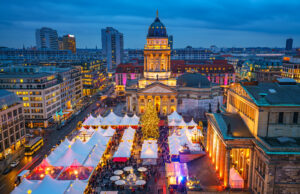
Rapid City is located in the state of South Dakota and has a lot of culture to offer as well as great sights and interesting destinations. So if you’re planning a trip to Rapid City, you’ve come to the right place!
Here you can find different housings and hotels around Rapid City
Just type in your destination and get many different suggestions.
Vacation in Rapid City
Rapid City, South Dakota is a great place to vacation. There are many things to do in the area including visiting Mount Rushmore, Crazy Horse Memorial, Custer State Park, and Wind Cave National Park. You can also take a scenic drive on the Needles Highway or the Wildlife Loop Road. There are also many restaurants and shops in Rapid City.
If you are looking for a place to stay, there are many hotels, motels, and bed and breakfasts in the area. There are also many campgrounds and RV parks if you are looking for a more rustic experience.
So, if you are looking for a great place to vacation, consider Rapid City, South Dakota. There is something for everyone in the family to enjoy.
Sights in Rapid City
Welcome to Rapid City, a bustling city in the western United States! This vibrant city is home to a variety of unique attractions and activities, perfect for visitors of all ages.
One of the most popular attractions in Rapid City is the City of Presidents, an openair museum featuring largerthanlife bronze statues of every US president. This unique attraction is a great way to learn about American history and see some of Rapid City’s best sculptures.
If you’re looking for an adrenaline rush, head to one of Rapid City’s many ziplines or trampoline parks. For a more relaxed activity, take a scenic stroll through one of the city’s many parks or explore the downtown area, which is full of shops, restaurants, and art galleries.
No matter what your interests are, you’re sure to find something to do in Rapid City!
History of Rapid City
On the morning of September 9, 1857, a party of Lakota Sioux led by Chief Inkpaduta attacked the unfortified trading post of Spirit Lake in northwestern Iowa. The Lakota killed every one of the 40 settlers they found there men, women and children. According to one account, they scalped most of their victims and cut off the heads of two young girls. They also took captive a young boy named Abraham and several women, one of whom was pregnant.
This brutal massacre set off a chain of events that would eventually result in the founding of the city of Rapid City, South Dakota.
In the wake of the Spirit Lake massacre, the US Army sent a force of 700 men to the area to exact revenge on the Lakota and to protect settlers in the area. The Army constructed a fort, which they named Fort Randall, and stationed troops there.
The Lakota Sioux responded to the presence of the fort by attacking settlers and stagecoaches traveling through the area. In one such attack, they killed an Army lieutenant and several civilians. The Army retaliated by going on a scorched earth campaign, burning Lakota villages and destroying their food supplies. Eventually, the Lakota were forced to relinquish their claims to the Black Hills region and relocate to a reservation in presentday Nebraska.
In 1874, a group of gold prospectors discovered gold in the Black Hills. This sparked a gold rush, and thousands of miners and fortune seekers flocked to the area. The United States government responded by sending in the Army to maintain order and protect miners from attacks by the Lakota Sioux.
In 1876, the Lakota Sioux once again went to war with the US Army. The Lakota were led by Sitting Bull and Crazy Horse, and the conflict came to be known as the Great Sioux War. The Lakota were ultimately defeated, and the US government confiscated the Lakota’s land in the Black Hills.
In 1877, the Army established a permanent post in the Black Hills, which they named Camp Rapid. The following year, the Army moved the post to a new location and renamed it Fort Mead. In 1880, the Army decided to build a railroad through the Black Hills. To do this, they needed to purchase a rightofway through the Lakota reservation. The Lakota refused to sell, so the Army used eminent domain to take the land.
This action spurred more violence, and in 1881, the Lakota once again went to war with the US Army. The conflict, known as the Second Sioux War, ended with the US Army’s victory at the Battle of Wounded Knee.
With the Lakota defeated, the US government had free rein to develop the Black Hills. In 1882, the Army moved Fort Mead to a new location and renamed it Fort Meade. The town of Sturgis, named after an army officer who fought in the Second Sioux War, was founded that same year.
Other towns began to spring up in the Black Hills, including Deadwood, Lead, and Spearfish. In 1889, the territorial capital was moved from Yankton to Bismarck, North Dakota.
In 1890, the US government passed the Indian Appropriations Act, which formally granted the Black Hills to the Lakota Sioux. However, the Lakota were not given permission to live in the area, and the US government soon began working to force them onto reservations.
In 1892, the Army established a cavalry post south of Rapid City, which they named Camp Robbins. The following year, the town of Rapid City was founded. The name was chosen because of the Rapid Creek, which runs through the city. The city was incorporated in 1883.
The Lakota continued to fight for the return of the Black Hills, but their efforts were ultimately unsuccessful. In 1980, the US Supreme Court ruled that the Lakota had been illegally deprived of the Black Hills, and awarded them $106 million in compensation. The Lakota refused to accept the money, saying that it could not compensate for the loss of their homeland.
Today, Rapid City is the second largest city in South Dakota, with a population of over 70,000. The city is home to a number of tourist attractions, including Mount Rushmore National Monument, Crazy Horse Memorial, and the Museum of Geology.
Other vacation destinations in the United States:













